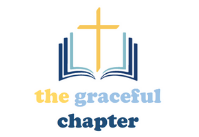Do you or someone you know have a disability or mobility issue and struggling to fund home adaptations? You’re not alone – millions face similar situations daily. Fortunately, there may be relief available. The government offers Disabled Facilities Grants (DFG) for this purpose, but applying can be challenging. In this blog post, we’ll explore how to successfully apply for a DFG grant to create a safe and comfortable home environment. Let’s get started!

Understand the eligibility criteria for the grant
Before applying for a Disabled Facilities Grant, it is important to understand the eligibility criteria. To be eligible, you must be living in England, Wales, or Northern Ireland and have a disability or mobility problem that requires adaptations to your home. The disability or mobility problem can include physical disabilities, mental health issues, learning difficulties, and sensory impairments. Additionally, your household income and savings will be taken into consideration when determining your eligibility for the grant. It is also important to note that the grant is means-tested, which means that those with a higher income or savings may receive a reduced amount or be ineligible for the grant altogether. Understanding these criteria will help you determine if you are eligible for the DFG and prepare your application accordingly.
Research local disabled facilities
Researching local disabled facilities is an important step in successfully applying for a DFG grant. It is essential to ensure that the adaptations you are planning to make in your home meet the requirements of the grant. This means considering factors such as accessibility, safety, and functionality. For instance, you can choose stiltzhealthcare.com or other similar websites to find information and resources on disability-friendly home modifications. It may also be helpful to consult with a professional, such as an occupational therapist, to get expert advice on the adaptations that would best suit your specific needs. Gathering this information beforehand will not only help you in the application process but also ensure that you make informed decisions about the adaptations needed for your home.
Related Posts
Obtain any necessary documents required for the application
You will also need to gather any necessary documents required for the DFG application. This may include medical records or letters from healthcare professionals confirming your disability or mobility issue. You may also be asked to provide proof of your household income, such as payslips or bank statements. It is important to have these documents ready before starting the application process, as they may take some time to obtain.
Fill out all relevant application forms accurately and completely
It is crucial to fill out all relevant forms accurately and completely, as any errors or missing information could delay the processing of your application. This may also lead to a rejection of your application. It is recommended to double-check all information before submitting the forms to ensure their accuracy. Seek help from family members, friends, or professionals if needed to ensure all information is correctly filled out. Moreover, make sure to fill in all sections of the form that are relevant to your specific situation.
Apply along with any supporting documentation to the grant organization
The final step is to submit your application to the grant organization. This can typically be done online or by mail. Along with your application, it is important to include any supporting documentation that may strengthen your case for receiving the DFG grant. This may include quotes from contractors for the proposed adaptations or a letter from your occupational therapist explaining the necessity of these changes for your well-being. Including such information can help provide a more comprehensive picture of your needs and increase the likelihood of your application being approved.

Follow up on your application status regularly with the grant organization
After submitting your application, it is essential to follow up regularly with the grant organization to check on the status of your application. This will not only give you an idea of when to expect a decision but also allow you to provide any additional information or documents that may be requested by the organization. Additionally, if your application is rejected, following up can help you understand the reasons for the rejection and if there is any possibility of appealing the decision. Keep a record of all communication with the grant organization for future reference, and do not hesitate to seek help or advice from organizations that specialize in advocating for individuals with disabilities.
Applying for a Disabled Facilities Grant can be a challenging process, but it is worth the effort to create a safe and comfortable home environment. Understanding the eligibility criteria, researching local disabled facilities, gathering necessary documents, filling out forms accurately and completely, submitting supporting documentation with your application, and following up regularly are all crucial steps in successfully applying for the grant. With determination and proper preparation, you can increase your chances of receiving the DFG grant and improving your quality of life.





